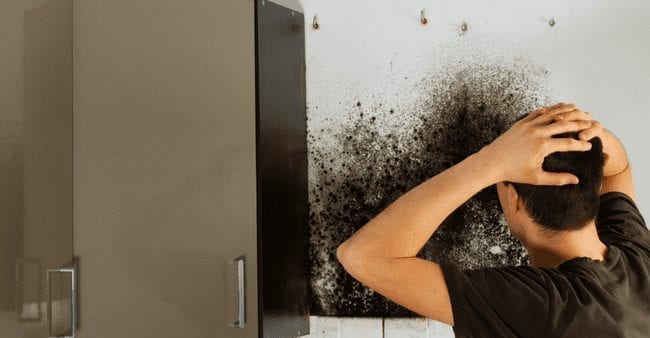Exposing Covert Water Line Leaks: 6 Practical Detection Tricks
Exposing Covert Water Line Leaks: 6 Practical Detection Tricks
Blog Article
Are you currently interested in insight about Top leak detection hacks?

Early discovery of dripping water lines can reduce a potential disaster. Some small water leaks may not be noticeable.
1. Analyze the Water Meter
Every residence has a water meter. Examining it is a guaranteed manner in which helps you discover leaks. For beginners, switch off all the water sources. Make sure nobody will certainly purge, utilize the faucet, shower, run the cleaning equipment or dishwashing machine. From there, most likely to the meter and watch if it will change. Given that no person is utilizing it, there ought to be no activities. If it relocates, that shows a fast-moving leakage. If you discover no adjustments, wait a hr or two and check back once more. This implies you may have a sluggish leak that could even be below ground.
2. Check Water Usage
If you detect unexpected modifications, despite your intake being the very same, it means that you have leakages in your plumbing system. An unexpected spike in your bill shows a fast-moving leak.
On the other hand, a steady increase on a monthly basis, despite the very same routines, shows you have a sluggish leakage that's additionally gradually escalating. Call a plumber to completely examine your residential or commercial property, specifically if you really feel a warm location on your floor with piping below.
3. Do a Food Coloring Test
30% comes from toilets when it comes to water usage. Test to see if they are running effectively. Decline flecks of food shade in the storage tank and wait 10 minutes. If the shade in some way infiltrates your bowl during that time without flushing, there's a leak between the tank and also bowl.
4. Asses Exterior Lines
Do not fail to remember to inspect your outside water lines as well. Test faucets by affixing a garden hose. Must water seep out of the connection, you have a loosened rubber gasket. Change this as well as guarantee all links are limited. If you've got a sprinkler system, it will certainly aid get it skillfully checked out and preserved annually. One tiny leak can waste tons of water as well as increase your water costs.
5. Evaluate and also Assess the Situation
Home owners need to make it a routine to inspect under the sink counters as well as also inside closets for any kind of bad odor or mold and mildew growth. These two red flags show a leakage so punctual interest is needed. Doing regular examinations, even bi-annually, can conserve you from a major problem.
A lot more importantly, if you understand your house is currently old, maintain a watchful eye on your heating units, hose pipes, pipes etc. Look for discolorations and also deteriorating as many pipes as well as appliances have a life span. They will additionally normally deteriorate because of damage. Don't wait for it to escalate if you suspect leaking water lines in your plumbing system. Call a professional plumber right away so you do not end up with an awful mess in your home.
Early detection of leaking water lines can minimize a prospective calamity. Some small water leakages may not be noticeable. Checking it is a proven way that aids you discover leaks. One little leak can throw away loads of water and also spike your water costs.
If you suspect dripping water lines in your plumbing system, don't wait for it to intensify.
How to Know If Your Home Has a Hidden Leak
Water Meter Reveals Inexplicable Water Usage
If you’d like to test whether or not there’s a leak somewhere in your home, you can do this using your water meter. Here is how to conduct the test:
Don’t use any water in your home for at least 30 minutes; this also means not turning on faucets or water-using appliances.
Go outside, and check your water meter for activity.
If your water meter shows that there was activity, even though no one was using any water, this proves that there is a leak in your home.Visible Mold or Mildew Growth
Leaks behind walls create moist, dark environments that allow mold and mildew to grow and thrive. Eventually, you might see mold growth forming on the wall closest to a hidden leak.
If mold is growing in an area that receives a high amount of moisture, such as a bathroom, it may simply be an indication that better ventilation is needed. However, if you see mold growth on a wall or the ceiling in an area where you would not expect, you probably have a hidden leak.
Musty, Mildew Odor
Sometimes you might not be able to see the mold or mildew that is growing as a result of a leak. However, the smell can give the problem away just as easily. If you catch a whiff of something musty, there’s a good chance that old water is collecting somewhere in your home that you can’t see.
Stained/Warped Walls, Ceilings, or Floors
When your home soaks up water, a variety of red flags can become visible, including ceiling stains, bubbling drywall, warped walls, and sagging floors. While these issues can be caused by excess humidity, they can also be signs that a pipe or plumbing connection has started leaking behind your walls.
Inexplicably High Water Bill
After a while, you get a general sense for what your water bill should be. If you own a pool or sprinkler system, your bill will tend to be higher during summer. However, if you receive a water bill that seems especially high, and you can’t figure out what caused it, then you may have a hidden leak somewhere that’s increasing your bill.
https://www.plumbingjoint.com/blog/2019/july/how-to-know-if-your-home-has-a-hidden-leak/

As a keen reader about Detecting hidden plumbing leaks, I think sharing that portion was a smart idea. Are you aware of anybody else who is excited by Hacks to detect leaks? Why not promote it. I praise you for your time. Come back soon.
For top results, contact! Report this page